What is so special about construction blocks?
What do construction blocks and programming have in
common?
I have always liked construction blocks. They work in a
certain order and fail if the order is not followed. I have
equated computer science with construction blocks since I started
playing with computers. I am curious about the different
instruction sets and how to employ each author uses those
instruction sets.
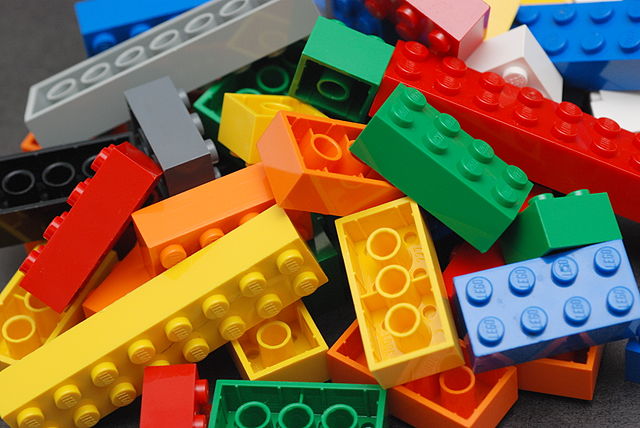
At the same time, block programming uses a similar concept to
that of construction blocks. Each block contains a package of
code and the programmer does not need to know what the code is or
does. For example, MIT developed Scratch for children, in which a child can write a
program as if it were a flowchart. For example, a block that
might be labeled WALK might have code to make an image
(sprite) walk. Another might be labeled STAND, which
might make a sprite stand up. With these two blocks, the child
can either make the sprite walk and stand up (most likely the
wrong logic) or stand up and walk (more appropriate logic)
depending on the order of the blocks (functions, procedures and
other recyclable code), which is the principle of object
programming. At the same time, this is the principle behind
building blocks where the position of the construction blocks
determine the look and/or function of the end result.
As such, the wrong order can cause the model to collapse
(syntax error). If your model does not collapse, but gives you a
different result than expected (logic error).
The following is simply my opinion of some brands that I have
bought sets from (Lego, Cobi and Sluban) and
others that I find interesting like Gorod Masterov (Город Мастеров).
If you are wondering what building blocks regardless of the
vendor and programming have in common, consider Lego as the market leader and classic modeling.
- Understanding that all Lego clones are
measured against the original product, in programming, there
are several languages that others are compared with including
the way code is written — for example, two spaces for
indentation in Ruby.
- Considering Lego and its well-made
clones, there are several technologies and their languages are
the same — for example, the syntax in both MySQL and its fork
MariaDB, in other words, drop-in technologies.
- In programming, there are modern languages that look good
compared to older languages, but lack the strength of the older
language — for example, losing the flexibility of SQL (old,
procedural) when using some object oriented languages (datasets
as objects). At the same time, there are several languages
where the derivative of a language might be better and sexier
than the original — for example, C#
being more attractive than C for many young
programmers while occupying different market shares, C# for games and C for
system programming.
- In operating systems, there are some OSs derived from
others that are no where near the functionality of the original
where the clone is often useless, but still desirable in some
way or another — for example, ReactOS
being an interesting project while not being ready for prime
time. The latter is true with the rest of the vendors on this
page unless specified otherwise.
Lego (Denmark, 1932):
Made in Billund, Denmark, since 1932, Lego is the most common brand name when it comes to
interlocking construction blocks. Several companies worldwide
have cloned Lego blocks for years in an
attempt to grab part of the market. As such, Lego has become the benchmark, on which similar
building systems are based on.
The quality of Lego has changed various
times. In the late 1980s, the quality diminished and its blocks
did not look as polished. This is about the same time that
Lego had lost a good share of its market. In the
early 1990s, the quality returned to its former self — well
polished blocks without injection molding defects, spots left
behind where blocks were attached to others or the injector
itself. Note that all Lego pieces including
parts of their minifigures have the Lego name on each stud or inside flat pieces.
Lego models have always come exposed
studs. Compared to Cobi, Lego models look unfinished. Then again, Lego is the industry standard although Lego itself is a clone of an older interlock block
system — Kiddicraft, which was first released by British company
Hilary Page in 1944.
Lego minifigures (not Duplo or
Fabuland figures) were first released in 1976 (no movable parts
and no face). The minifigures that most people know about (with
arms, legs, hands and faces) were first released in 1978. These
minifigures are the most common recognized from other brands.
Unfortunately, Lego minifigures are highly
cloned although it is illegal as Lego holds the pattern and rights worldwide. There are
lots of fake Lego models mostly coming from
China with Lego-like minifigures — for example,
Lepin. At the same time, some Chinese vendors even use fake
brands — for example, Sembo that uses M&H
instead of H&M to make people believe that the model is
licensed by the clothing store.
The only issue that I find with Lego minifigures is that they do not have human
proportion. These figures look chunky. Of course, it does not
help that Lego used the four-stud width for all
cars for almost four decades, which were proper for the 1976
two-stud wide minifigures with no arms or legs. Nowadays
(finally) Lego makes cars wider and more
proportionally correct using an even number of studs — usually
six or eight studs wide. There are also some cars that are nine
studs wide, which seems to have been adopted from Cobi models like the Youngtimer Collection and the
Maserati licensed models. What is interesting in the new design
of race cars is that it looks too much like Sluban (小鲁班) or
perhaps it is the way around.
.jpg)
Airfix (England, 1939):
Made in the UK, Airfix has specializes
in model kits (plastic, glue, paint and lots of patience) of
cars, airplanes and other vehicles. As of late, Airfix has come up with QUICKBUILD models, which are directed to
entry-level hobbyists. These QUICKBUILD models are Lego clones with the base made from Lego style blocks, but the external shell made from
plates connected to the base as in the second picture below.
If I were to get one of QUICKBUILD models, I would get the Ford
Mustang GT 1968 for about $30. You can never go wrong with a
muscle car.
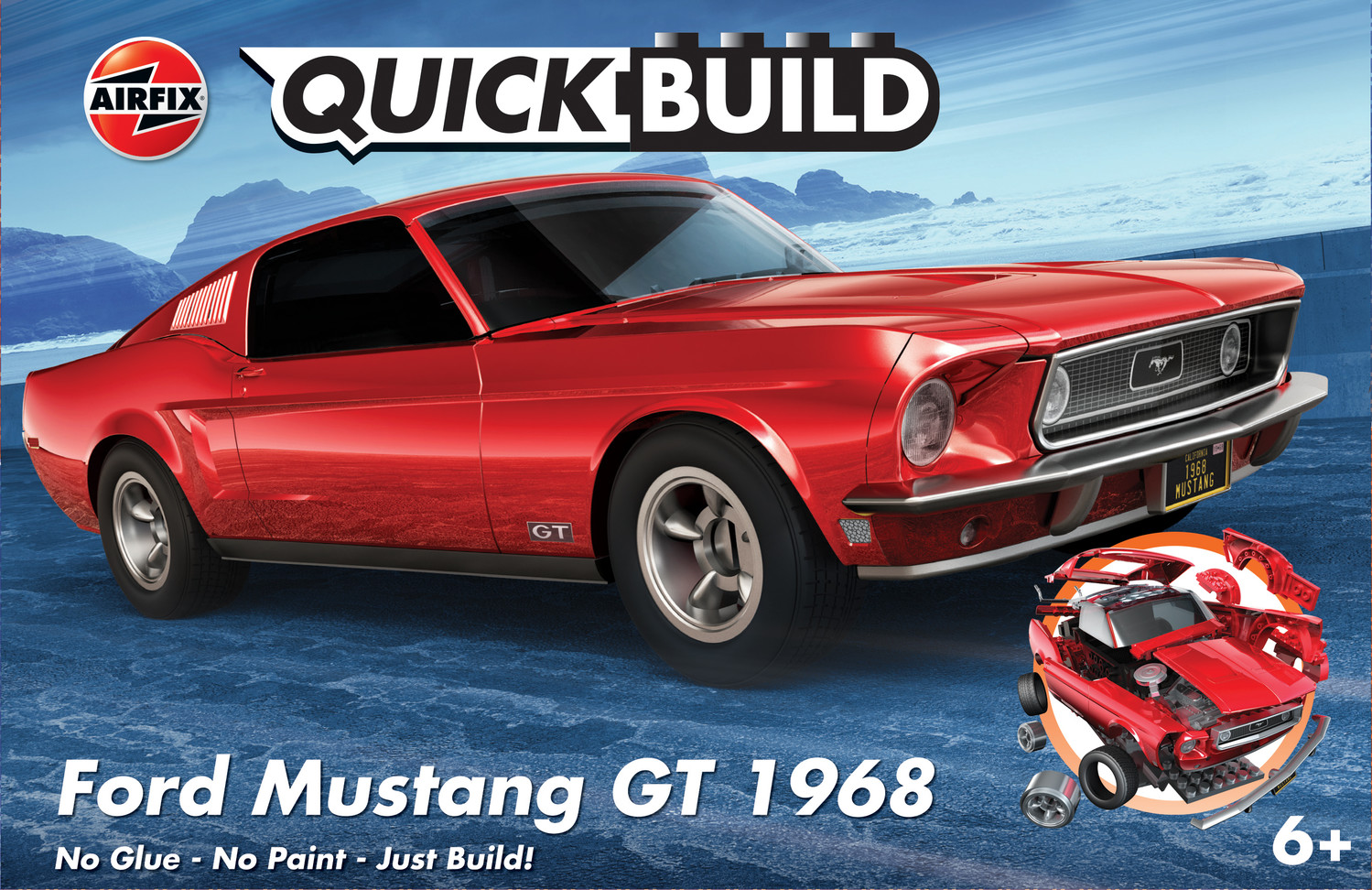
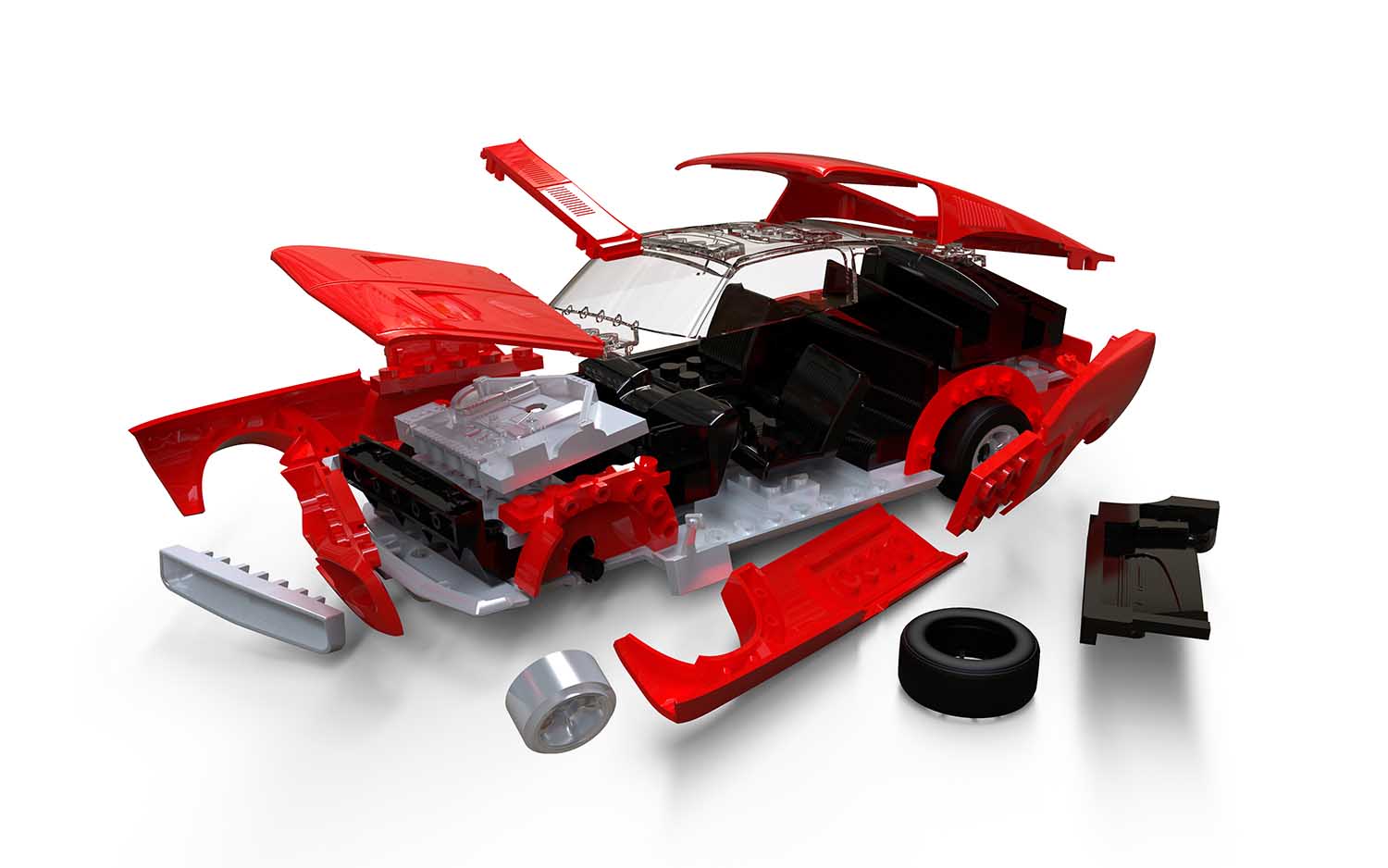
Oxford Blocks (South Korea, 1961):
Made in Busan, South Korea, since 1961, Oxford (옥스포드) —
originally Dongjin then Daegoo Lucky (1971), then Busan Lucky
(1972), then PAPA (1984) and now Oxford (1992) — has possibly the closest
quality to Lego including the look and feel of
its models. Oxford is the perfect
clone. It is my understanding that Oxford is licensed to produce its blocks and
minifigures identical to those of Lego. The biggest difference is that Oxford does not put its brand name on its
pieces.
There are three model of Oxford
minifigures. One model looks exactly to Lego minifigures. Another model has slightly round
legs and feet. The third model is my favorite with articulated
knees.
What makes Oxford highly
interesting is the licensing from the Republic of Korea (ROK)
National Military, Dunkin Donuts, Kellogg's Cafe and several
others. In the US, Oxford made the
Kre-O brand name for Hasbro — in other words, Oxford repackaged as Kre-O (2011-17). Since
Hasbro pulled the plug on the Kre-O line, Oxford as a whole lost its market share in
the US.
Unfortunately, buying Oxford
models in the US is hard and fairly expensive — about two or
three times as much as a similar Lego model in the US. The latter is why I have no
experience with Oxford.
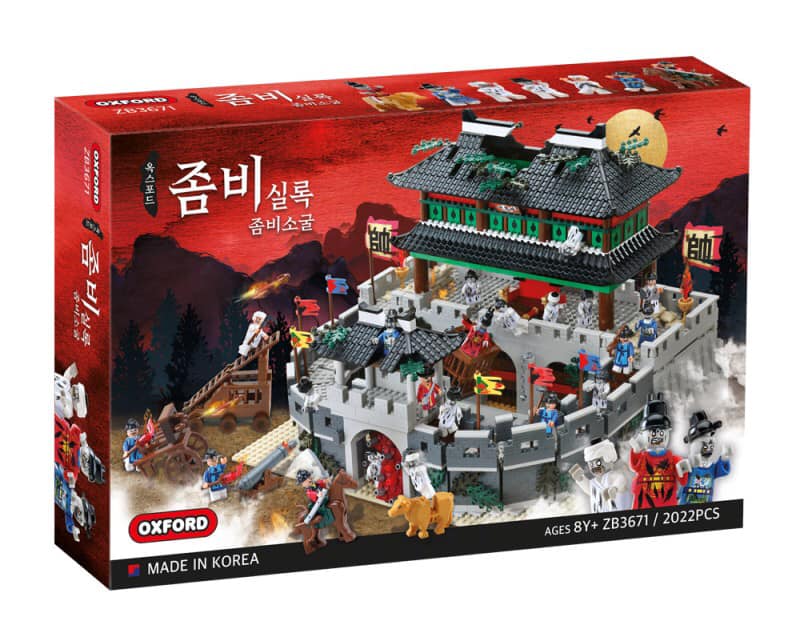
Mega Bloks (Canada, 1985):
Mega was originally a company based
in Montreal, Quebec, Canada, where they were made from 1985 till
Mattel took over in 2014. Mattel moved production of the Mega brand to China and Mexico. Mega has specialized in building blocks for toddlers
and specialized Lego-compatible sets with
different themes like the Power Rangers, Teenage Mutant Ninja
Turtles (TMNT), Masters of the Universe, Call of Duty and Halo
under the brand name of Mega Construx. Mega also introduced Hot Wheels building sets, which
are sets of classic die cast models, with its own standard action
figures (drivers) and an average price of $10.
Mega does not have standard
minifigures anymore. The older model of their minifigures were
too close to Lego minifigures making a good
product look like a cheap knockoff. These older minifigures are
no longer produced to avoid lawsuits (as what happened to Lepin
when Lego sued them for intellectual theft) as well as bad
reputation. The new minifigures are rather made according to the
theme and license. In other words, their minifigures are small
versions of the characters that they represent. The minifigures
of Masters of the Universe look like the actual character from
the television series with articulated arms and legs.
Just like Lego and Cobi, the Mega brand name is on
every piece.
In 2014, Mega became part of Mattel, which
means that these building blocks are most likely not made in
Canada anymore. In 2020, Mega partnered
with Terra Cycle to create plant-based plastics (bags and blocks)
and recycling them. I am not sure if the latter weakens the
material or not.

Cobi (Poland, 1992):
Made in Warsaw, Poland, since 1992, Cobi specializes in mostly 1:35 scaled models like
cars and motorcycles as well as 1:48 scaled models like military
planes and tanks (licensed to produce models for the World of Tanks video game). Cobi holds a good part of a market share that Lego does not want to be involved — military models
and various weapons, which are highly accurate and come with
historical facts. The latter means that Cobi models are accurate design making its models are
for collectors rather than not only fun to build, but they are
educational too and fairly for playing. From what I have been
able to observe, Cobi has a hold
primarily of the adult (16+) market with its historical models,
some of which can consist of over 1,000 pieces.
Their biggest sellers are the Historical Collection (WW1, WW2,
Korean War, etc.), Youngtimer Collection (European cars including
those from the Soviet Bloc) and other licensed models like
Maserati, Fiat, Doctor Who and even the UK military under the old
Character Toys brand, 2012).
The quality is excellent although the blocks are a bit too
bright compared to Lego. Cobi does not only clone Lego blocks. Cobi also has its own
block designs, which helps Cobi produce more
realistic models. Just other vendors, the Cobi brand name is on every piece.
One major difference between Cobi and Lego is that Cobi models usually use
flat pieces for its exterior. In my opinion, this makes its
models cleaner and more professional — an opinion that I had
since getting my second Lego in 1980 (#6627).
Ironically Cobi models are more expensive than
those by Lego.
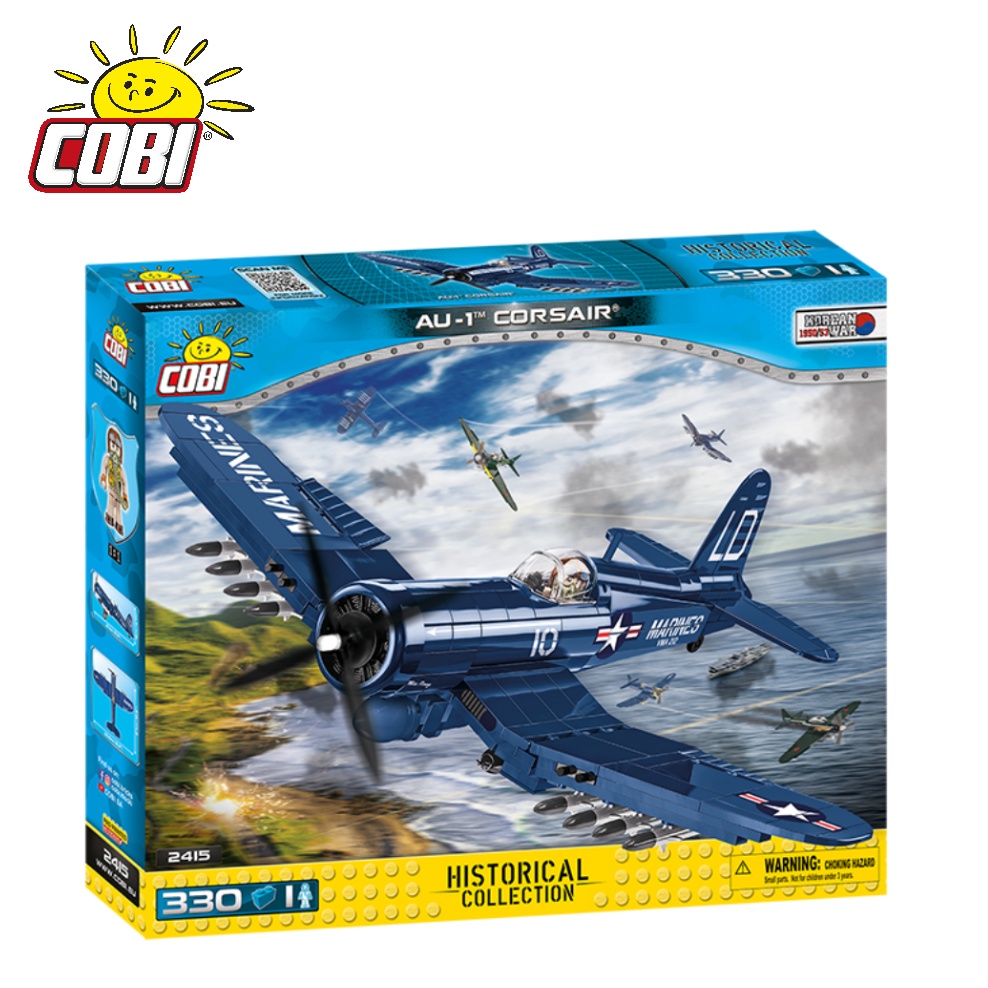
In 2006, Cobi merged with Best-Lock —
cheap-looking blocks including knockoff Lego minifigures made in China although based in
Colne, England. After the merger, Best-Lock has used the Cobi manufacturing process. Strangely enough, the
Best-Lock website still advertises OEM (original equipment
manufacturer) pieces and how its products are sold by other
parties under different names. The latter is fairly confusing
especially with Darren Toys still selling Best-Lock models.
Just other vendors, older Cobi figures as
well as Best-Lock minifigures looked like bad Lego imitations. Nowadays Cobi minifigures look more human with better
proportion, molded facial expressions, mouths and even noses.
Cobi uses different models for the figure heads
to display various expressions and even bandages in soldiers.
These minifigures have become my favorites in the past couple of
years as they are easy on the eyes of children and collectors
(adults) alike.
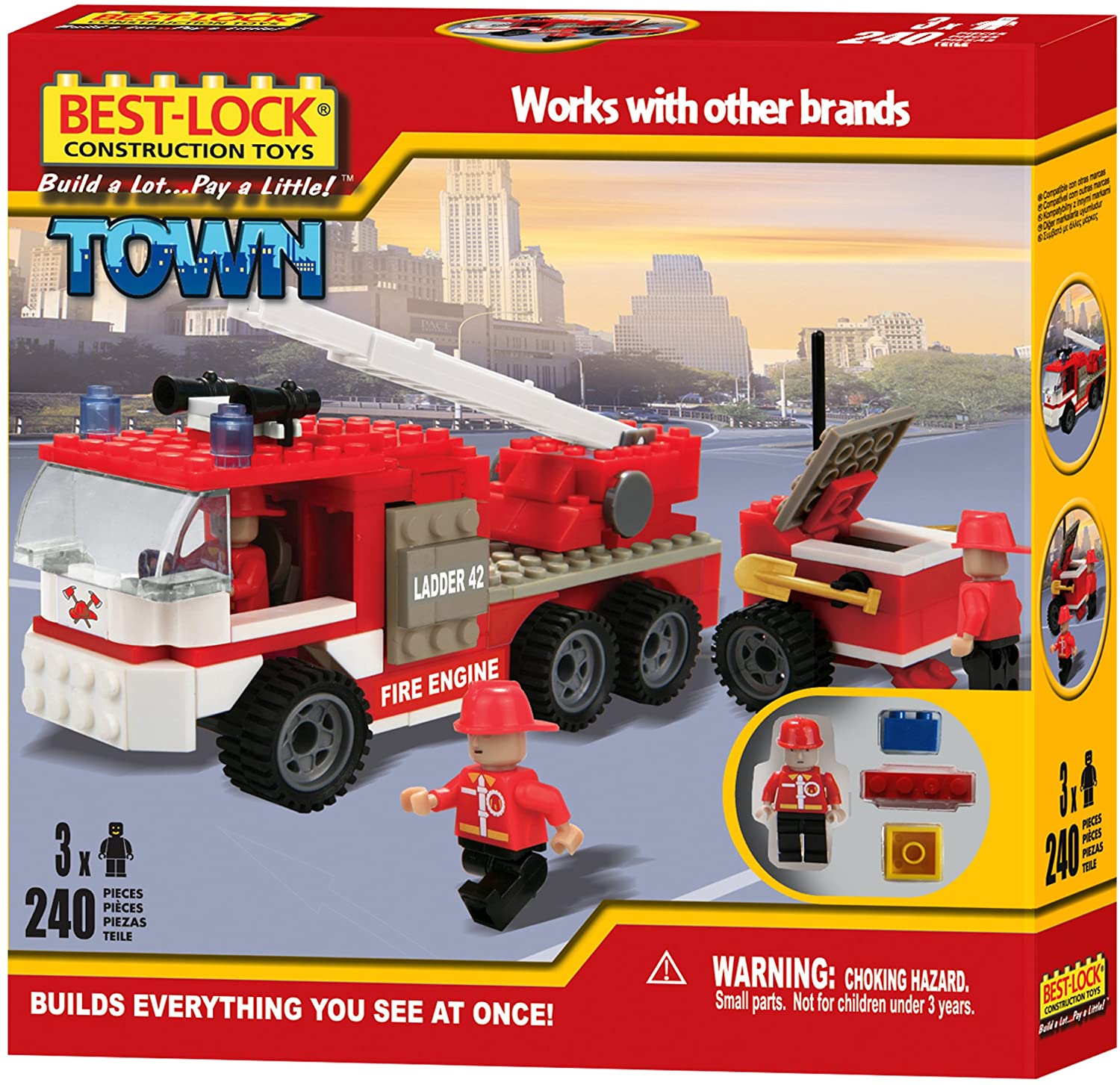
Gorod Masterov (Russia, 1995):
If there is a brand that makes me very curious, it is Russian
vendor Simbat (Симбат) that sells Gorod Masterov (Город Мастеров), which
means City of Heroes) since 1995 (07/2019). This
Lego clone (including minifigures and Duplo) is
made although bragging of being "developmental constructors
of European quality" (02/2020) located in Moscow, Russian
Federation. As per the EAC (Eurasian Conformity, Евразийское
соответствие) marking on every box, one would get the impression
that these blocks were made Russia (Россия), Belarus (Беларусь),
Armenia (Армения), Kazakhstan (Казахстан) or Kyrgyzstan
(Кыргызстан). The reality is that these blocks are made in China,
most likely by GoBricks (高砖积木) and not made in Russia (Россия)
although the words Сделано в Китае or 中国制造 (Made in China) do not
appear on boxes from Gorod Masterov. Some of the
blocks are branded with some sort of design (not the brand name
neither in Cyrillic nor anglicized). Most blocks are not branded
although they all seem to have the same quality of plastic
(acrylonitrile butadiene styrene, simply referred to as ABS with
formula (C8H8·C4H6·C3H3N)n where n is a
variable depending on quality and production cost) most likely by
GoBricks (高砖积木), which provides blocks to several
Chinese brands.
Gorod
Masterov mostly covers Russian cars and trucks like GAZelle
(ГАЗе́ль) by GAZ (ГАЗ), Zhiguli (Жигули) and Lada (Лада) by
AvtoVAZ (АвтоВАЗ), KAMAZ (КАМАЗ) and Ural (Урал) as well as the
Russian military. By the way, one of my earliest memories (c.
1974) was riding in my uncle's Lada (a taxi).
One thing that I do not like is that minifigures cannot fit in
some of these models. Some cars and trucks come with one-piece
hollow truck cabins and full outer shell of some cars. It just
takes the fun away. Those one-piece cabins come without seats or
doors and grayed out windshields (not clear plastic). I find this
fairly deceiving because the boxes show clear windshields and
even minifigures inside as if the truck cabins were usable. Maybe
models of KAMAZ or Ural trucks might need this sort one-piece
cabins to show what these cabins look like in real KAMAZ or Ural
trucks (same mold for all models per brand, not up to scale with
the minifigures, fairly unimpressive approach). These models are
four studs wide just like Lego used to do
up to 1978 — realistic look, but impractical since the driver
(minifigure) is too big for these models. Gorod Masterov should make
the truck cabins in such way that minifigures could fit inside or
simply larger — considering the size of the minifigure, at least
six studs wide. The need for realistic look and feel might also
be for the outer shell of cars, but at least minifigures can be
put inside these cars.
I cannot find these models anywhere, not even in Amazon. The only thing I can speculate is that the
brand name is adopted from the 1966 Russian movie Город Мастеров, which is a
children's story that I have not yet watched. As a matter of
fact, I have not been able to find the movie with English
subtitles anywhere.
Just like Gorod
Masterov, many companies producing Lego clones use non-branded Chinese-made blocks. There
are also companies that specialize in minifigures that 05/cost
anywhere from 75¢ to $10 — mostly counterfeit Lego minifigures. Therefore any company can sell
designs without worrying about production cost other than
packaging including artwork on boxes and instruction sets.
.jpg)
BanBao (China, 2003):
BanBao (邦宝益智) is yet another Chinese manufacturer,
but it seems that some models are made or put together in Europe.
The Chinese catalog is different than that of other parts of the
world unless you order from Chinese distributors that ship to the
United States and other parts of the world — even more expensive
than Cobi.
Since BanBao minifures do not look
like those of Lego, there is little to no
chance that Lego would sue them for
anything.
As you can see in the image in this section, BanBao has the license to sell Peanuts
products. What surprises me is that BanBao models, especially those with Snoopy,
are fairly expensive in the United States. Maybe the Peanuts
license is fairly expensive. Another thing that surprises me is
that the Chinese website does not have any Peanuts models, but
the Austrian site does. If I were to guess, I would say that the
Peanuts license is only for Australia, Europe and the
Americas.
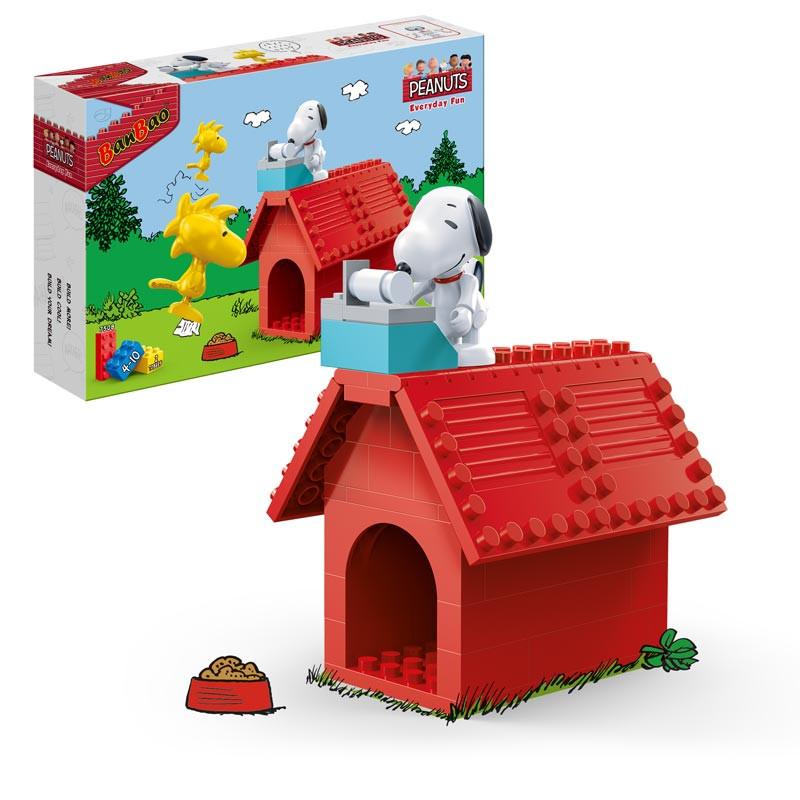
Sluban (China, 2004):
Made in Chenghai District, China, since 2004, Sluban (小鲁班) has
been distributed in Netherlands for the European market since
2007, Canada for the North American market soon after, Russia
(with Russian text on the cover of the boxes rather than other
languages), India (probably the second biggest market share
outside its native China) since 2014 and Malaysia for the Malay
Peninsula including Singapore since 2019. Sluban promotes itself as an educational toy
with the slogan "Educational Bricks, Smart Kids".
Sluban is one of the China
vendors of Lego clones with the highest quality,
yet still not the best. Sluban blocks
are branded M38 (not the Sluban brand name, but as the first
three characters of every single model) are highly polished and
have a descent fit. Sluban models do
not come easily undone that often as other Chinese clones, which
is a common flaw and complaint especially about Lepin, which
sells counterfeit Lego sets, as well as
cheaper no-name clones.
Sluban does not seem to be
related to other Chinese manufacturers. Maybe this is why
Sluban has distribution centers
worldwide — Europe (Netherlands), North America (Canada), India,
Russia and Malaysia.
I point out the latter because a company like Lepin sells
models under various brand names like CaDA or Nifeliz (high-end car
models with the brand name on each stud, surprisingly high
quality too), Mould King, Sembo, Xingbao and others
often branded as ENU, which are supplied by GoBricks (高砖积木).
Other than Sluban, if I were to get
another Chinese model, I would most likely choose CaDA Initial-D 1:24 models, which strangely enough are
more expensive than Lego and does not
include a minifigure to drive the car.
Sluban minifigures from 2004 to approximately 2014 looked like
cheap Lego clones (gray truck in this
section) as many other Chinese companies do including the company
that makes the Russian brand Gorod Masterov. Nowadays
Sluban minifigures are different from
most other vendors (green truck, now looking like Roblox R15 character) giving the brand an
independent presence and credibility in the market.
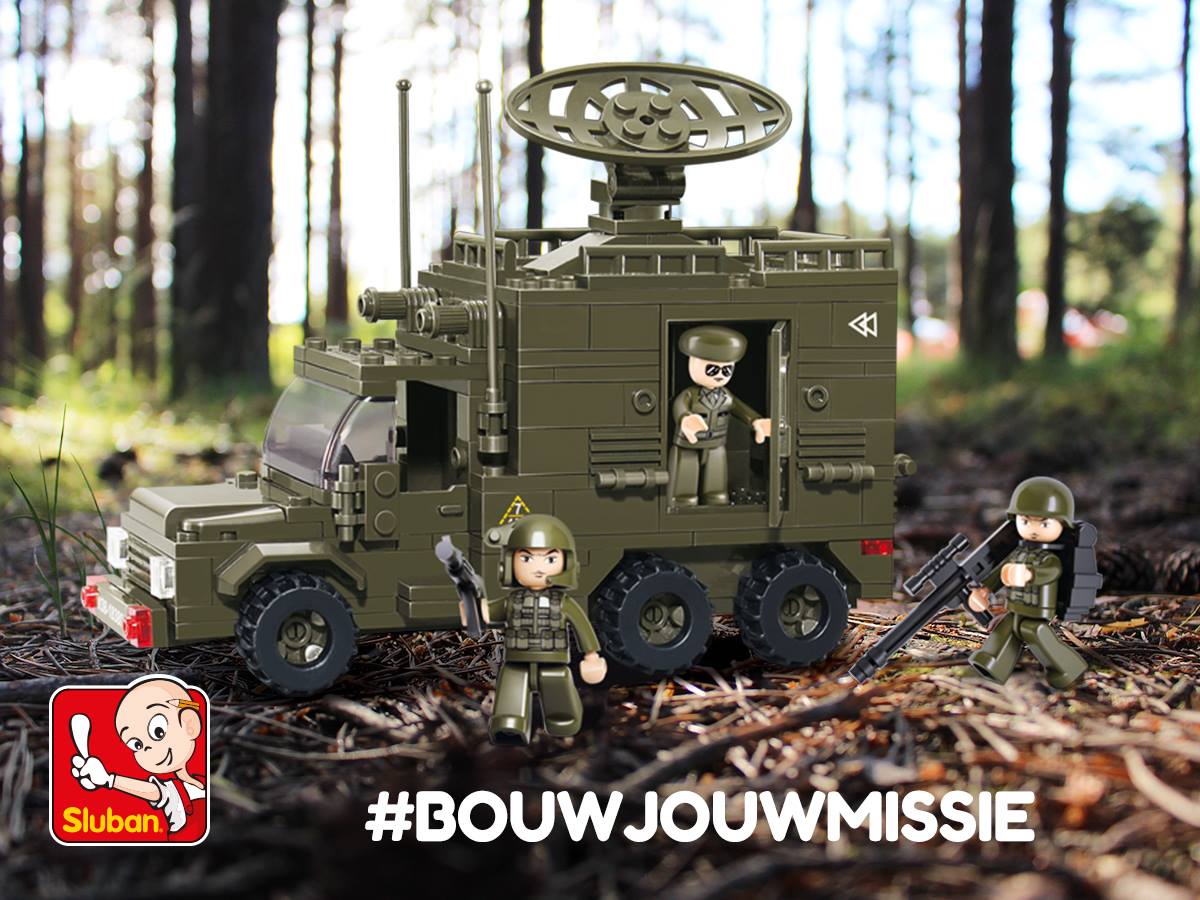
Most if not all Sluban models
are fairly cartoonish like Lego and other
vendors except for the Model blocks line of high-end cars, tanks
and airplanes that could rival the design quality (not accuracy,
not properly scaled) of both Lego (not daring
enough, never military sets or weapons) and Cobi (more realistic designs than Lego). As such, just like Cobi, Sluban has a
large selection of military models although scale and details are
not necessarily accurate. Most Sluban
models come with flat pieces for their exterior for a cleaner
look — yet not as polished like Cobi.
What I find strange is that Sluban
has models in China that are not available worldwide. I strongly
believe that some of these models could sell well in the United
States, at least, due to the fascination of the Asian culture in
this country.
As a little piece of trivia, the little boy in the Sluban logo is named Sluban. From an advertisement and marketing
point of view, naming the mascot (a bald boy in overalls who
plays with Sluban models) after the
brand name is a smart move. Children might identify with Sluban (the character) faster than linking the
Sluban brand name.
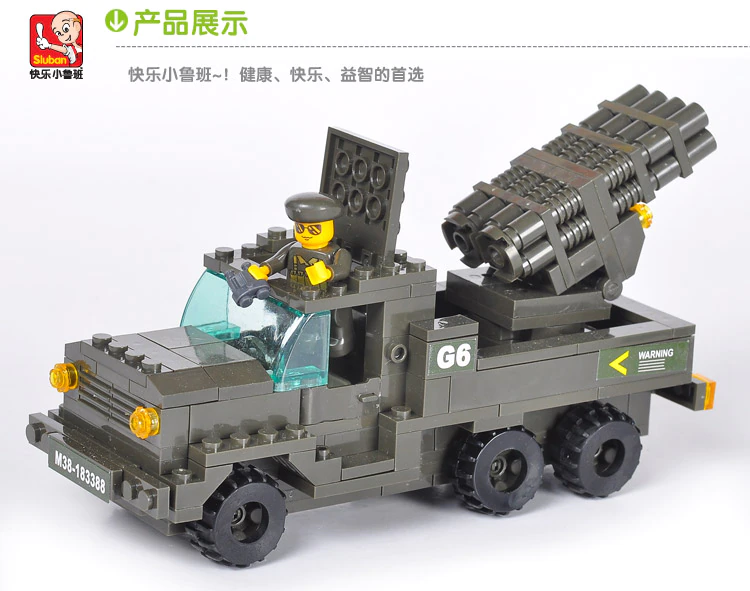
MyBuild (Taiwan, 2009):
Made in New Taipei City, Taiwan, made by the T-fun Company
since 2009, MyBuild has made one-piece
mecha frames to build robots, which remind me of Macross (マクロス,
1982-2018) rather than super robots like Mazinger (マジンガ,
1972-2018). Although these models come with a cavity where a
Lego-sized minifigure (pilot) can sit in,
MyBuild does not include minifigures possibly
to avoid lawsuits.
Both the designs are well made and executed. The quality of
the pieces looks similar to Lego — basic
colors and not shinny perhaps as a means to incorporate MyBuild models into anyone's Lego city and/or collection. After all, the cavity in
the models seems to be designed only for Lego minifigures only. Minifigures of other vendors
like Cobi, Sluban would not fit properly or at all unless
redesigning that section of the mecha.
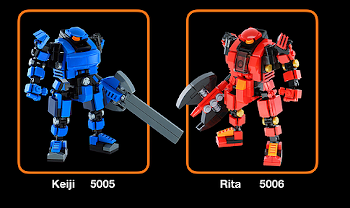
Promotional & Others: Dates Unknown
-
Magint Market — company promotion,
manufacturer unknown (2022)
Russian convenience stores Magint Market (Магазин Магнит)
has its own line of promotional Lego clones sold under the brand Kid's
blocks appropriately called
Magnitopolis (Магнитополис)
with minifigures that look more like mini-Duplo figures —
simply adorable. Prices range from ₽149 ($2.33) to ₽999
($15.61). My favorite model is the ₽499 ($7.80) truck — dirt
cheap compared to models of other vendors — and I would like
to have it in my collection.
The design and aesthetics is similar to that of Sluban, which 05/not the best
although still functional to tell a story and have fun with
regardless of age. In any case, the whole purpose of Magint
having this line sets or constructors (конструктор as
referred to in several Russian websites) is to advertise its
convenience stores (markets) similar to Walmart or Target in
the United States. I have tried to find the website of the
manufacturer of these sets, but I have not been able to. If
you do, please contact me at the link at the bottom of the
page.
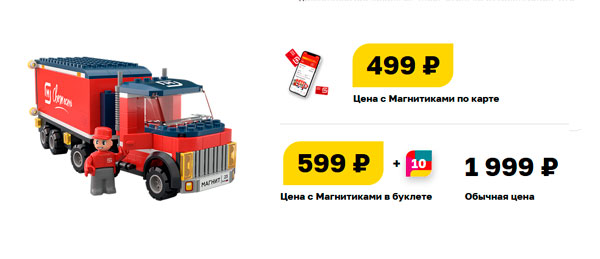
-
I am not including the URL for this company as I am not
going to give free advertisement to anyone. Of course, if
they were to pay me, I would gladly promote them.
The only reason I am bringing the Minifigured name is
because they sell minifigures, on which any person or company
can have anything printed on them. This is much better that
some random business card. I have considered having them
print the logo and name of VintageOS as means of
advertisement or to simply keep a handful for my collection
(minimum order of 50, base cost of $250). These minifigures
are also good as a momentum of an event — for example, a
child's birthday as party favors.
Minifigured uses minifigures that look identical to those
from Sluban. I asked both
companies whether Sluban or
some other vendor makes these minifigures. Only Minifigured
replied, but it only made wonder if their customer service
was admitting wrong-doing and grounds for a lawsuit by using
the minifigure design of another company.
"Our minifigure is constructed just like the Sluban
minifigure.... Our minimum is 50 figures Our base price is
$5..."
Sluban never replied.
Note that the minifigure in this section is for Team
Keller, Great Strides, which helps individuals with cystic
fibrosis and/or supports the research of cystic fibrosis. In
no way, VintageOS is related
to Team Keller or Great Strides. The sole purpose of
including the minifigure is to show how a company can use
building blocks to promote any for-profit or non-profit third
party.
.jpg)


.jpg)






.jpg)





.jpg)